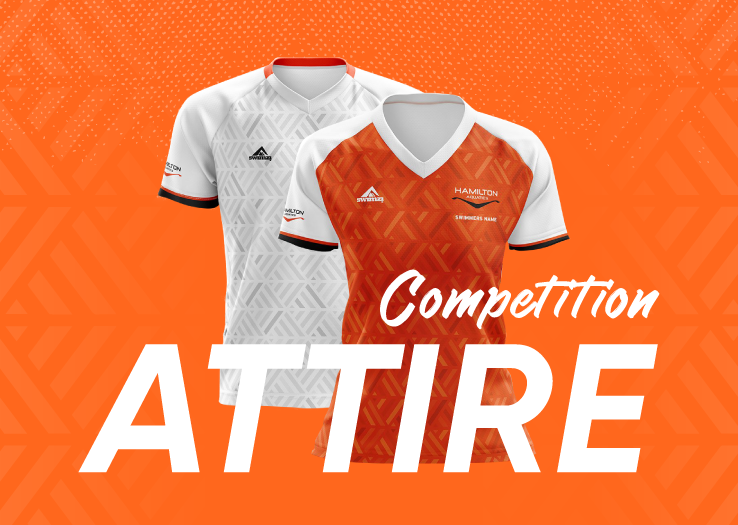Blog

Competition Attire
All members should be proud to represent Hamilton Aquatics. Pulling on an orange cap every day, surrounded by friends and teammates, is a strong statement of unity. At competitions, standing proud in a Swimzi kit in a sea of Orange and White looks both bold and professional. Everyone turns up to competitions looking the part, but this often disappears as soon as the warm-up ends.
Rather than seeing a sea of orange and white Hamiltonians in the stands, there are swimmers sitting in wet towels, bathrobes, dry robes, and bikini tops. They walk around the arena in race suits and bare feet, shivering because they are wet and cold.
Where did all the Hamiltonians go?
Everyone knows how important a warm-up is. Raising core body temperature is necessary to help prepare the body for racing and reduce the risk of injury. It is also important for cognitive performance to help improve alertness and reaction time, especially in the mornings when we are sleepy or Day 2 of competition when we are more tired.
When competitions are busy and warm-up time is condensed to 15 minutes, swimmers worry that they won’t have sufficient time to warm up, yet, when they leave the pool, minimal effort is made to maintain the warmth they’ve worked 15-20minutes to gain. Swimmers will stand wet in a heavily air-conditioned arena with little more than a towel to try and stay warm. Instead of drying off and keeping extremities warm (fingers, toes, head), towels are used for shoulders, and shoes are carried in hands. Why does this happen?
Convenience
It takes an element of preparation and understanding to have and use a towel when you get out of the warm-up pool. Knowing you have a spare towel for changing into a race suit can often make this an easier decision. Swimmers would often rather air-dry than use their towels to keep this as dry as possible for later in the session or day. Packing multiple towels or a shammy towel will help alleviate the need for keeping just one towel dry for 8 hours. Similarly, having multiple pairs of socks to use within trainers can often help swimmers stress less about getting trainers wet. Drying feet, applying a layer of warmth, and then using shoes helps keep the core body temperature where it needs to be is essential for peak performance.
Another common theme once swimmers are dry and have changed into race suits, is to arrive to activation wearing only a t-shirt and trainers. Race-suits provide no thermal protection, so having no shorts, tracksuit bottoms or leggings covering legs means swimmers are cooling down. Knowing that activation will make them warm, swimmers shed layers in preparation. However, they are missing a trick! Starting in a warmer state allows for less time spent warming up. Warm muscles will allow for increased force production and sweating during a warm-up is ok!
Whilst warming up is always the first thing swimmers will do in their day, the second key focus should be on maintaining warmth. Representing Hamilton Aquatics with the correct uniform is vital but if this is not enough material to retain heat, wearing a thermal t-shirt underneath is a must. Older swimmers have taken to wearing hoodies under their Hamilton t-shirts so they can still be seen without compromising performance outcomes.
Younger swimmers will heavily rely on their parents to have enough dry clothes for between races and a change of clothes to leave the pool in. Instilling good habits as a young swimmer will transfer into them becoming independent athletes in the future. If swimmers are not changing out of warm-up suits pre-race, spare clothes (shorts and t-shirts) and towels must be packed to help them stay warm after and between races. For older swimmers (who should be packing their own equipment), preparing for every race and every eventuality should already be a habit. Preparation is key for fast swimming!
For the next competition, let’s plan to get warm, stay warm, and enable fast swimming! Stand proud as a Hamiltonian during pre-pool, walking around the arena, and during races. Be a role model to all swimmers, at any academy, in how well you have prepared for each race, not just in the pool, but from the moment you first walk through the door to the moment you leave at the end of the weekend.

